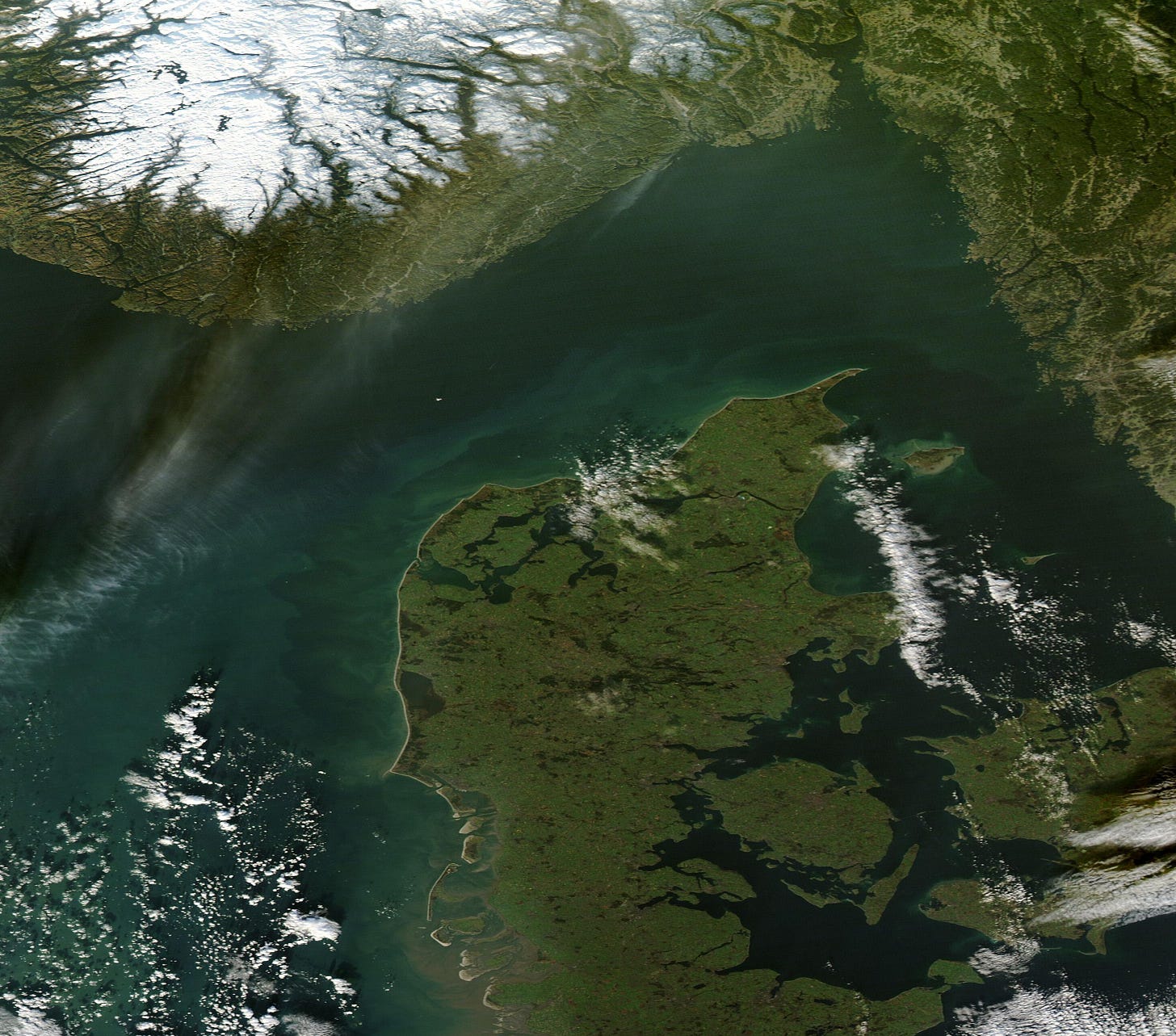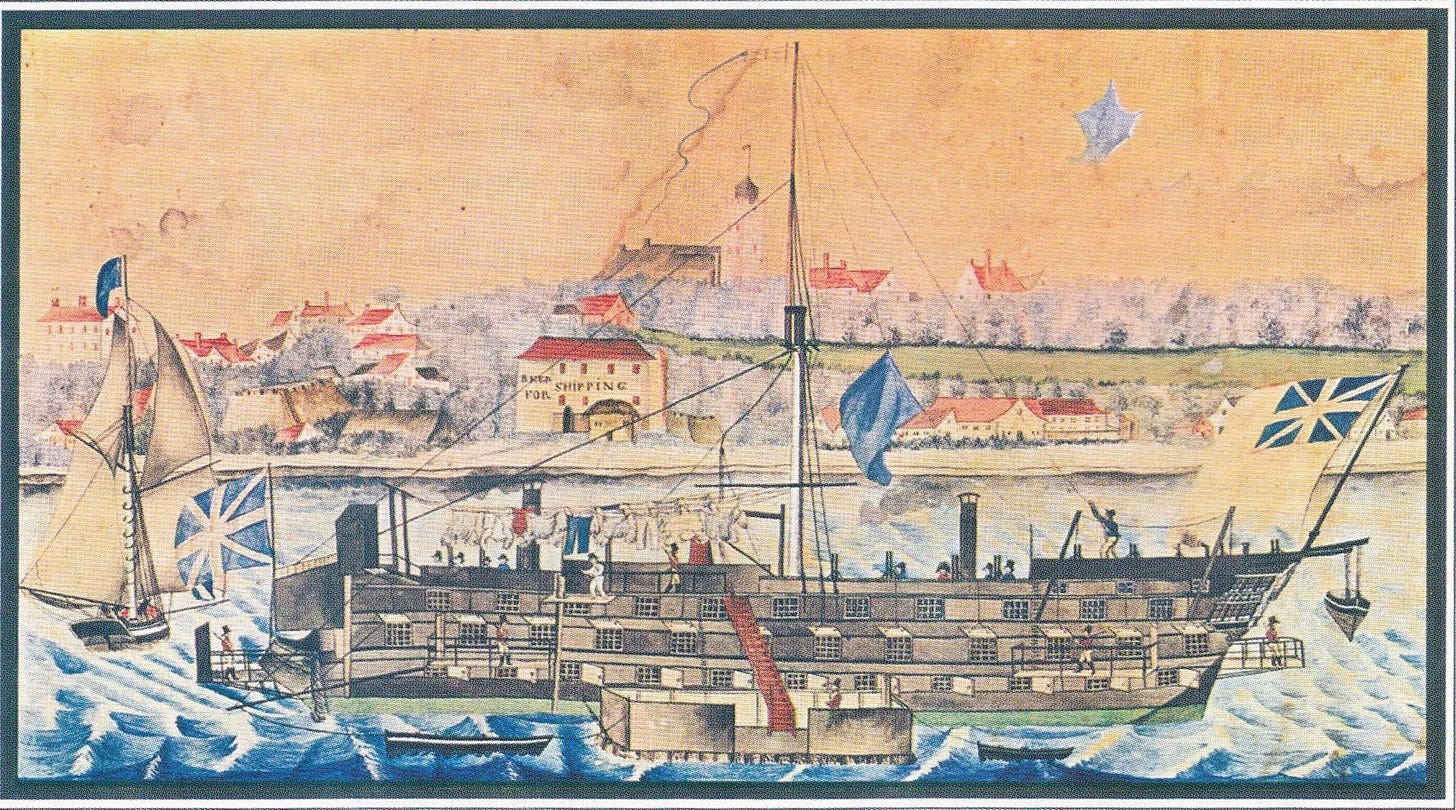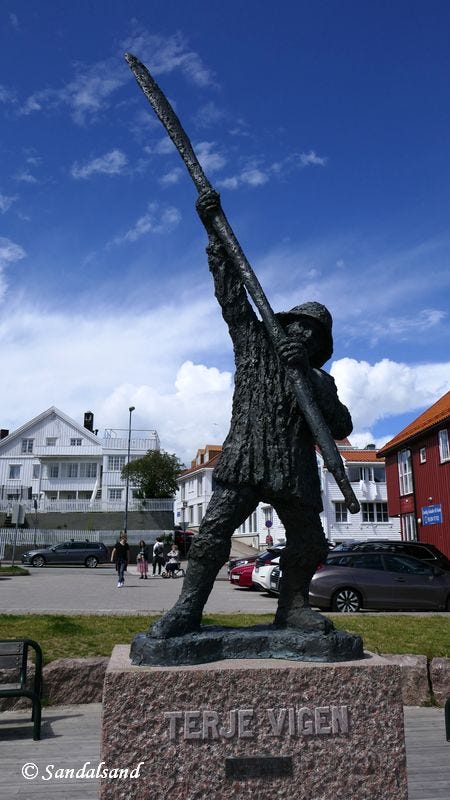Risking all for three casks of barley
Terje Vigen and the long shadow of the Skagerrak blockade
Life ambled along till the year of war in eighteen-hundred and nine; The tale's still told of what people bore, where want and distress combine. Cruisers from England blockaded each port, by land there was dearth far and wide, the poor people starved, and the wealthy went short, two powerful arms were no longer support with death and disease outside.
You may not know the poem, but no doubt you know its author. First published in 1862, Terje Vigen is the work of the young Henrik Ibsen. While better known for his plays, Ibsen’s tale of a determined mariner in wartime occupies a special position in his native Norway, where it is traditionally recited on national radio each New Year’s Eve.
The setting for the poem is the country’s south-eastern coast, overlooking the Skagerrak, the busy straight which separates Norway from Jutland and connects the North Sea in the west with the Baltic to the east. Ibsen himself lived for seven years on these shores, in the small coastal town of Grimstad, where he worked as a pharmacist’s apprentice from the age of fifteen. It was here that he got to know the men who would later inspire him to compose Terje Vigen.

This stretch of coastline was famed for its proud sea pilots, who would expertly guide ships to port through the rocky maze of outlying isles and skerries. One such pilot was Svend Hanssen Haaø, who became close friends with Ibsen during the young writer’s time in Grimstad.1 Svend was an old man by the time Ibsen encountered him and, as he recounted to the impressionable newcomer, had known tougher times.
Within living memory for Svend and his neighbours was the British blockade of the Skagerrak during the Napoleonic wars — and its disastrous consequences for a population who had long relied on grain from arable land overseas. With the stretch of water across to Jutland now off-limits to merchant boats, critical imports from Denmark came to a drastic halt, and hunger followed. Forests were stripped of bark for substitute flour, and newspapers published distressing DIY recipes: how to brew beer from birch sap, how to make tobacco from chopped straw fodder and nettles.2
In these years of hunger, pilots like Svend Hanssen Haaø came even more into their own. Many ran the British blockade in open rowboats to smuggle food back from Denmark. We’ll never know exactly how many such trips Svend made during the tough years of 1807-1814, but records show that he was picked up by the British on at least four occasions.3 Each time, Svend must have made it back to his native Grimstad, possibly after a stay on a British prison ship. This would have been far from unusual — in the wider region of Agder, 5-10% of the male population encountered a British prison between 1807 and 1814.4

Such was the fate of Ibsen’s poetic hero, Terje Vigen. When war and hunger come to the barren isle which is home to Terje, his wife and child, our protagonist heads south-east to Skagen in an open rowboat:5
Then trusting to fortune's grace profound he smartly took on the oars. At Fladstrand, reaching there safe and sound, he gathered his precious stores. God knows his cargo was nothing grand: three casks of barley, that's all; but Terje came from a wretched land, — - and here was the staff of life to hand; and his wife and baby call.
However, once nearly home with precious, if modest supplies, Terje has the misfortune to run into a British ship. He rows hard as he can (till blood from his fingernails sprang) but is no match for the foreign boat. Realising his journey home is doomed, he prays:
'Twas then that he cried through the thunderous roar to God in the depths of his dread; 'there on the innermost beach a-shore watches my wife at our pitiful door and waits with our baby for bread!'
Like so many pilots who risked the same run, Terje is taken to England and languishes in prison, his hair turning grey from dreaming of his home across the North Sea. Once released in 1814, he returns home to find his wife and child dead (presumably from starvation), buried as paupers in the parish burial-ground.
The Skagerrak blockade now over, Terje returns to his day-to-day life as a pilot. But, as all mariners know, waves and weather never fail to deliver drama, even in peacetime. One moonlit night, a British yacht in distress is sighted from the shore. Terje comes to the rescue but soon realises that the yacht’s captain is the very same man who commanded the ship that captured him running the blockade. Not only that, but the wife and child of the man who once deprived Terje of providing for his own family are on board the vessel now listing in front of him.
The waves deliver a stark choice to Terje that night: seek revenge on his onetime captor, and avenge the death of his own wife and child, or forgive whatever has gone before. Terje opts for the latter, and delivers the yacht safely to port.
'The years I spent in the prison's roar, they bred my heart's sickliness. And after, I lay like a heathland straw, I peered in a foul abyss. But now it is over; we two are quit; your debtor's not sly or low. I gave all I had — and you squandered it, and ask, if you think you've been dealt unfit, ask God who has fashioned me so.'
Written nearly half a century after the real Skagerrak blockade, Ibsen’s tale of Terje Vigen brought the harsh realities of life in this part of Norway to new generations — and reminded readers of their country’s uneasy, though pragmatic, relationship with Britain. In November 1855, just seven years before the poem’s first publication, Britain had signed a treaty which obliged them to protect Norway and Sweden against Russian attacks or claims, the so-called ‘British guarantee’.6 After all, in a world of great powers, who can afford to let past grudges trump present dangers.

Stein Opsal, Hvem var Terje Vigen? (2007). http://www.oftebro.com/Terje_Vigen_artikkel.pdf
Cato Guhnfeldt, Norges siste hungersnød (2011). https://www.aftenposten.no/kultur/i/rPvj8/norges-siste-hungersnoed
Stein Opsal, Hvem var Terje Vigen? (2007). http://www.oftebro.com/Terje_Vigen_artikkel.pdf
B. E. Johnsen, Norske sjøfolk i prisonen. In E. S. Christensen, K. Knudsen, H. Gjøde Nielsen, E. Helmer Pedersen, V. Petersen, S. Sørensen & P. Ussing (eds.), Nordjylland under Englandskrigen 1807-1814. (Aalborg: Aalborg Universitetsforlag, 2009). 247-278.
Roald Berg, Emotions in international politics: Distrust towards the British in Norwegian public life, 1814–1914. Scandinavica 58(2), 2019. pp. 98-114.


I didn't realise there was a blockade in this part of the sea. Terje sounds to be quite a legend in Norway. The humanity and forgiveness shown to his previous captor is no doubt why he is held in such high regard even now.